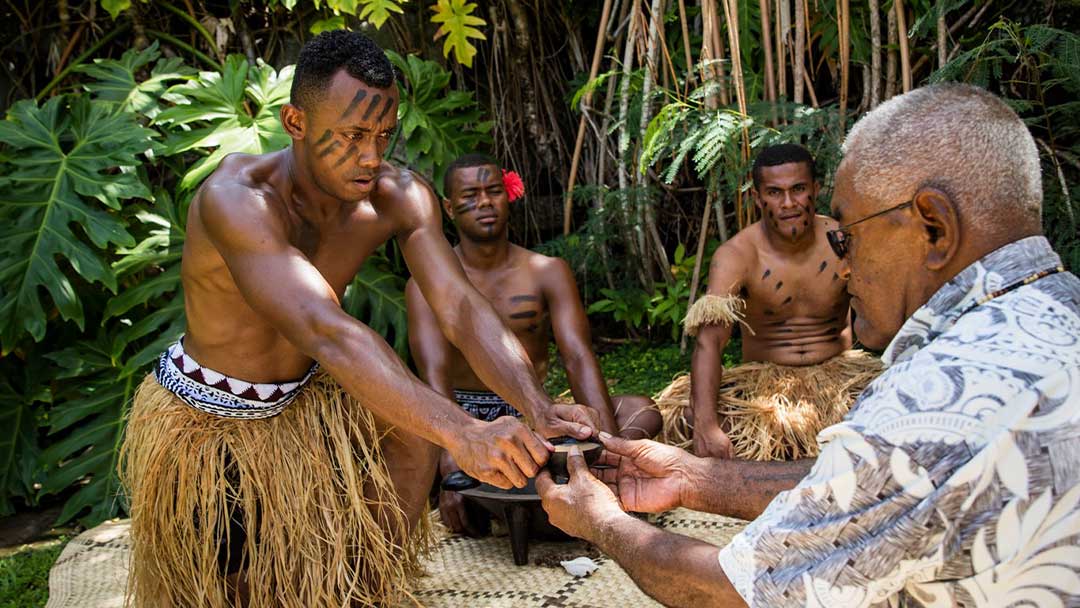
Traditional Kava Ceremony

Kava ceremonies serve as a welcoming gesture to visitors, demonstrating respect and fostering friendliness and camaraderie. They symbolize unity, respect, and community bonding, reflecting the Fijian belief that kava is a social unifier. Often used to settle disagreements or make peace between villages, kava ceremonies are crucial in maintaining social harmony.
Setting and Participants
The ceremony typically occurs in the evening, in a communal setting where participants sit in a circle around the village chief. The focal point of the gathering is a large wooden bowl, known as a tanoa, filled with prepared kava. This arrangement encourages social interaction and reinforces the sense of community.
Ceremony Process
The village chief initiates the ceremony by taking the first drink, setting the tone for the proceedings. Kava is served in bowls made from half a coconut, with each participant receiving their share according to their rank. The ceremony is punctuated by clapping before and after drinking and specific greetings, such as “Bula,” while drinking.
Etiquette
To show respect, participants must dress modestly, covering their shoulders and knees. Upon entering homes, hats and shoes must be removed, and participants sit cross-legged on the floor. It is important to wait one’s turn to be served and to choose between “high tide” (a full cup) or “low tide” (a half cup).
Cultural Significance
The kava ceremony reinforces social cohesion and hierarchy, serving as a social interaction and learning platform. It plays a significant role in various celebrations, including weddings, funerals, and other major events. By participating in the ceremony, individuals demonstrate their respect for tradition and their commitment to the community.
Effects and Beliefs
The consumption of kava may numb the mouth, inducing a sense of serenity and cordiality. Fijians believe that kava helps connect them with the spiritual world, fostering a deeper understanding of their place within the community.
Modern Context
Despite the passage of time, the kava ceremony remains an integral part of Fijian culture, with its significance extending beyond traditional settings. It has adapted to contemporary life, with many resorts and villages offering the ceremony as a cultural experience for tourists. This blending of tradition and modernity guarantees the continued relevance of the kava ceremony, providing visitors with a unique insight into local customs and social norms.




